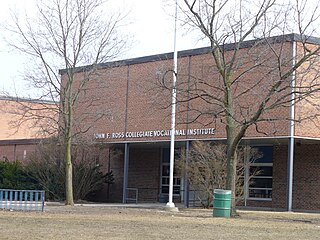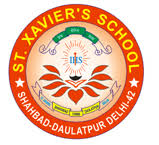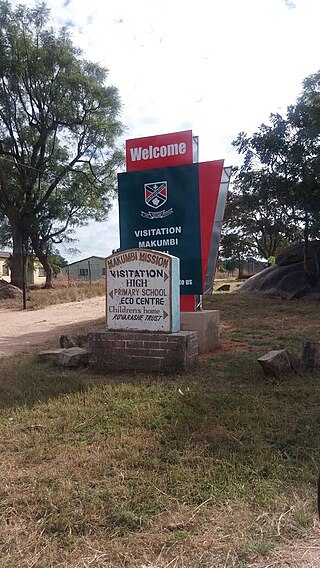
Vocational education is education that prepares people for a skilled craft. Vocational education can also be seen as that type of education given to an individual to prepare that individual to be gainfully employed or self employed with requisite skill. Vocational education is known by a variety of names, depending on the country concerned, including career and technical education, or acronyms such as TVET and TAFE. TVE refers to all forms and levels of education which provide knowledge and skills related to occupations in various sectors of economic and social life through formal, non-formal and informal learning methods in both school-based and work-based learning contexts. To achieve its aims and purposes, TVE focuses on the learning and mastery of specialized techniques and the scientific principles underlying those techniques, as well as general knowledge, skills and values.
Glen Norah is a high-density, working class suburb in southwest Harare, Zimbabwe.

The educational system in Hungary is predominantly public, run by the Ministry of Human Resources. Preschool kindergarten education is compulsory and provided for all children between three and six years old, after which school attendance is also compulsory until age of sixteen. Primary education usually lasts for eight years. Secondary education includes three traditional types of schools focused on different academic levels: the Gymnasium enrols the most gifted children and prepares students for university studies; the secondary vocational schools for intermediate students lasts four years and the technical school prepares pupils for vocational education and the world of work. The system is partly flexible and bridges exist, graduates from a vocational school can achieve a two years program to have access to vocational higher education for instance. The Trends in International Mathematics and Science Study (TIMSS) rated 13–14-year-old pupils in Hungary among the best in the world for maths and science.

St. George's College is a private Jesuit boys high school in Harare, Zimbabwe. The school, colloquially referred to as Saints or George's, is located in Borrowdale, a Harare suburb. The land was donated to the Jesuits. This led to the relocation of the school site from Bulawayo to Harare, the foundation of St. George's College. On the same site, a preparatory primary school was established, called Hartmann House (HH). This site is next to the presidents house, which acts as the official Zimbabwe State House. The school motto is Ex Fide Fiducia, a Latin phrase meaning "From Faith Comes Confidence".
A national qualifications framework (NQF) is a formal system describing qualifications. 47 countries participating in the Bologna Process are committed to producing a national qualifications framework. Other countries not part of this process also have national qualifications frameworks.

Education in Nepal has been modeled on the Indian system, which is in turn the legacy of the old British Raj. The National Examinations Board (NEB) supervises all standardized tests. The Ministry of Education is responsible for managing educational activities in Nepal. The National Center for Educational Development (NCED) is Nepal's teacher-training body.

Education in Costa Rica is divided in 3 cycles: pre-education, primary education, and secondary school, which leads to higher education. School year starts between the second and third week of February, stops at the last week of June, it continues again between the third and fourth week of July and finishes between the last week of November and the second week of December. Preschool and basic education are free to the public. Elementary and secondary school are both divided in two cycles. Since 1869, education is free and compulsory.

Kutama College is a private Catholic independent boarding high school near Norton, Zimbabwe in the Zvimba area, 80 kilometres southwest of Harare. Grown out of a Mission station founded in 1914 and run by the Marist Brothers, Kutama has a student population of about 700 pupils.

Education in Brazil underwent multiple phases: it first began with Jesuit missions, that controlled education for a long time; then, two hundred years after their arrival, the Jesuits' powers were limited by the Marquis of Pombal; shortly after that, the Brazilian government took over education, which is now run by the government through the Ministry of Education.

The Technical Education and Skills Development Authority serves as the Philippines' Technical Vocational Education and Training (TVET) authority. As a government agency, TESDA is tasked to both manage and supervise the Philippines' Technical Education and Skills Development Authority(TESDA). Its goals are to develop the Filipino workforce with "world-class competence and positive work values" and to provide quality technical-educational and skills development through its direction, policies, and programs.
St. Ignatius College is a private Catholic secondary boarding school, located at Chishawasha, near Harare, in the Mashonaland East Province of Zimbabwe. The school was founded by the Society of Jesus in 1962 as the brother institution for St. George's College, Harare.

St. Xavier's School, Rohini is a private Catholic primary and secondary school,in Shahbad Daulatpur, located in Sector 26, Rohini, Delhi, India. It was established in 1966, and managed by the Jesuits since 1990. The Christian-minority English medium school is coeducational, recognized by the Board of Education Delhi Administration, and is affiliated to the Central Board of Secondary Education (CBSE), with science, commerce, and humanities streams.
Education in Kyrgyzstan is compulsory for nine years, between ages seven and 15. Following four years of primary and five years of lower secondary school, the system offers two years of upper secondary school, specialized secondary school, or vocational/technical school.
During Alfredo Stroessner Mattiauda’s presidency (1954–89), education initiatives took a backseat to economic concerns and the task of controlling political adversaries, and teacher salaries fell to extremely low levels. The constitution of 1992 attempted to remedy the long neglect of education. Article 85 of the constitution mandates that 20% of the government budget be designated for educational expenditures. This measure, however, has proven to be impractical and has been largely ignored.

Shahid Rajaee Teacher Training University (SRTTU), is a public university in the Islamic Republic of Iran. The university is named after Mohammad Ali Rajaee, the second president of Iran. The university is located in the North East of Tehran, in the Lavizan neighborhood. The university was founded in 1980 on the premises of the former Tehran American School (1974-1979). The main purpose of Shahid Rajaee Teacher Training University is to prepare teachers to teach the national curriculum developed by the Ministry of Education at public secondary schools in Iran. It is worth mentioning that most of the graduates in the majors related to engineering teach in technical and vocational education schools.
The UNESCO-UNEVOC International Centre for Technical and Vocational Education and Training is the International Centre for connecting UNESCO Member States worldwide to develop and strengthen technical and vocational education and training (TVET). The International Centre is located at the United Nations Campus in Bonn, Germany and is financed by both UNESCO and the German government. UNESCO-UNEVOC works in the context of UNESCO’s mandate "to lead and coordinate Education 2030 through guidance and technical support". It undertakes its activities through a global network of TVET institutions comprising departments of ministries, national TVET bodies, Universities, and nationally leading training centers.

Gweru District is a district in the Midlands Province of Zimbabwe.

Rift Valley Technical Training institute (RVTTI) is a public technical training institute located in the highland city of Eldoret, Kenya. It is one of the Technical Training Institutes in Kenya. The institution offers Artisan, Craft, Diploma and Higher Diploma Courses with bias to practical industrial applications.

Visitation-Makumbi High School is a private Catholic secondary day and boarding school located approximately 30 kilometres (19 mi) from Harare, Zimbabwe. The school was founded by the Dominican Order of Sisters in the early 1960s and is currently a diocesan school administered by the Society of Jesus as a part of Makumbi Mission.













